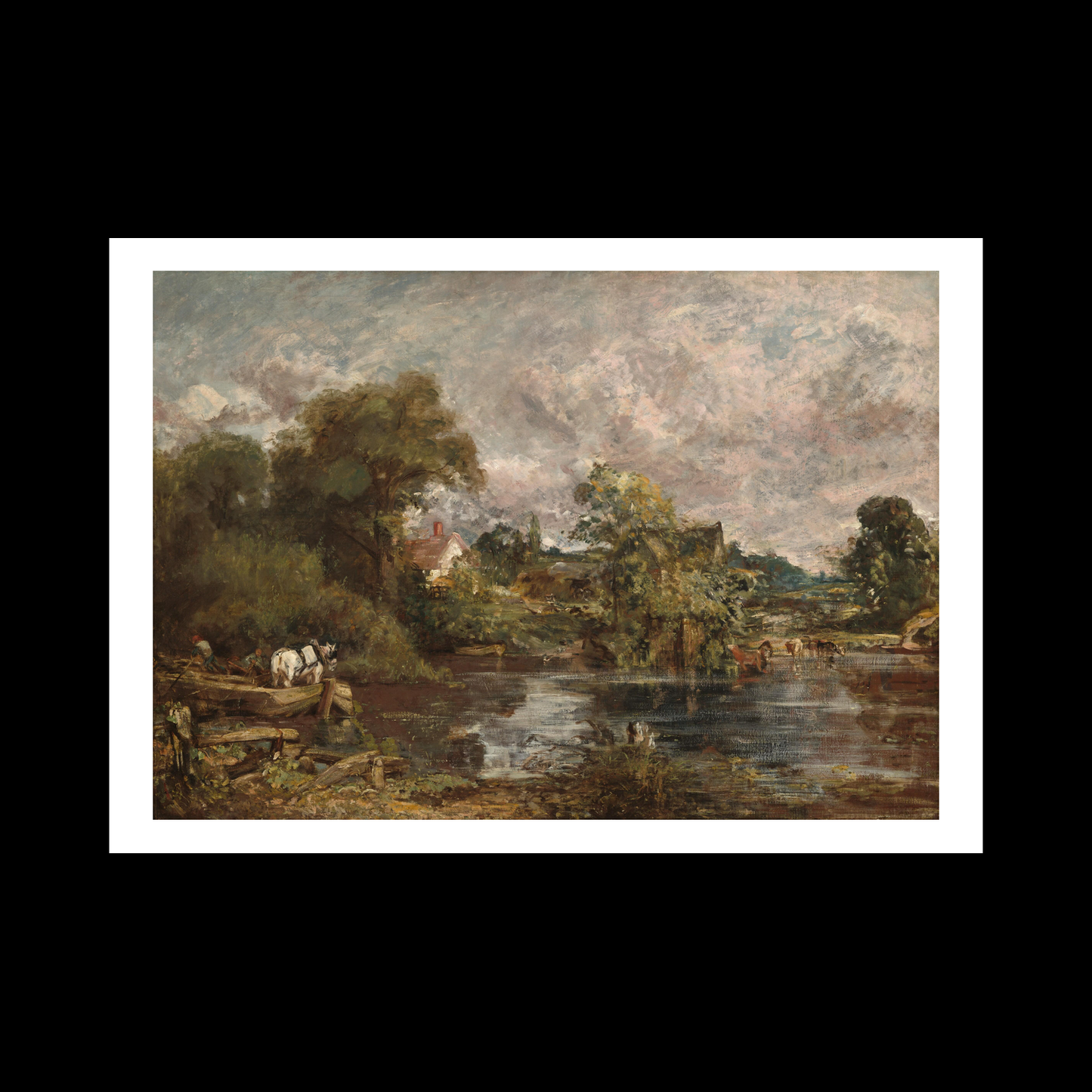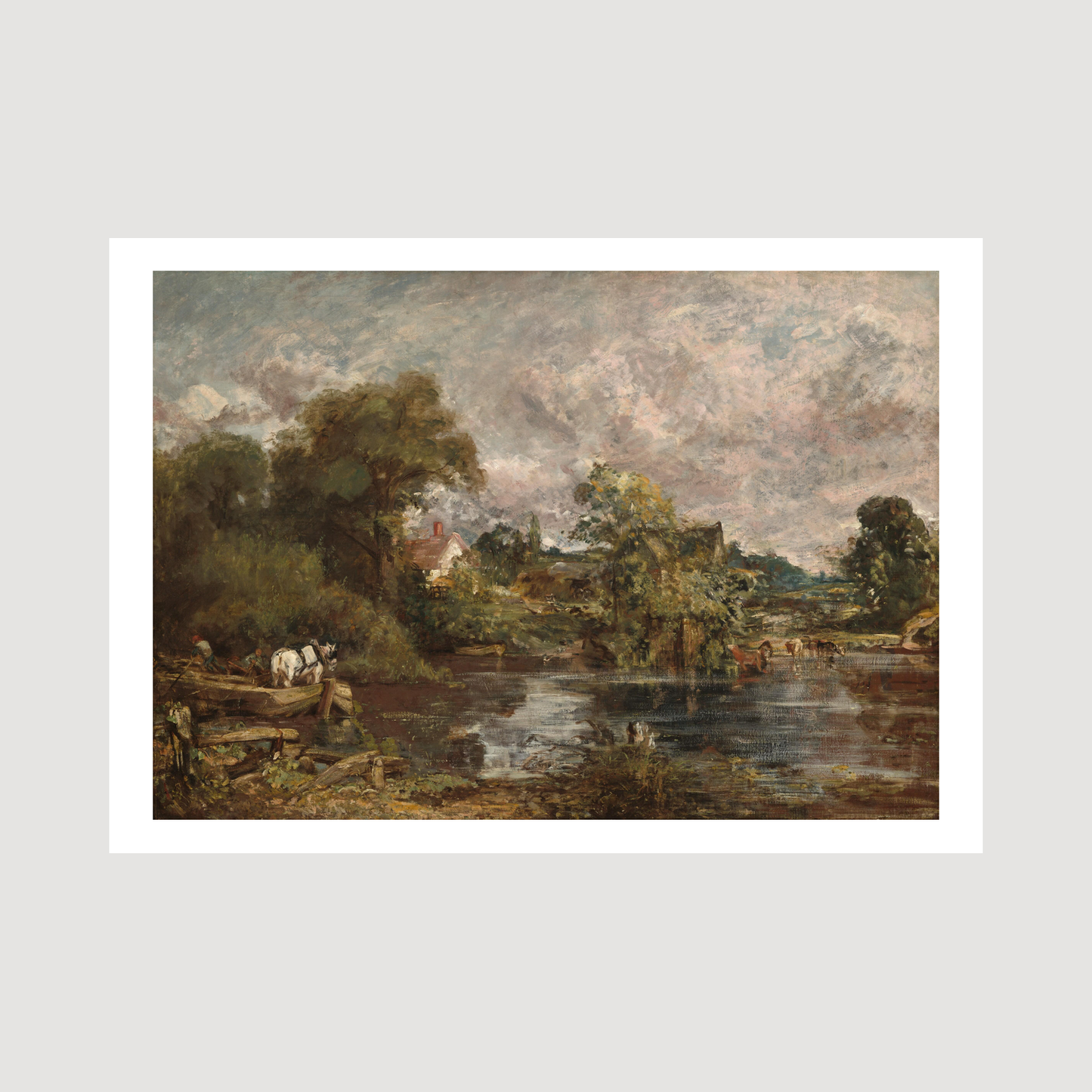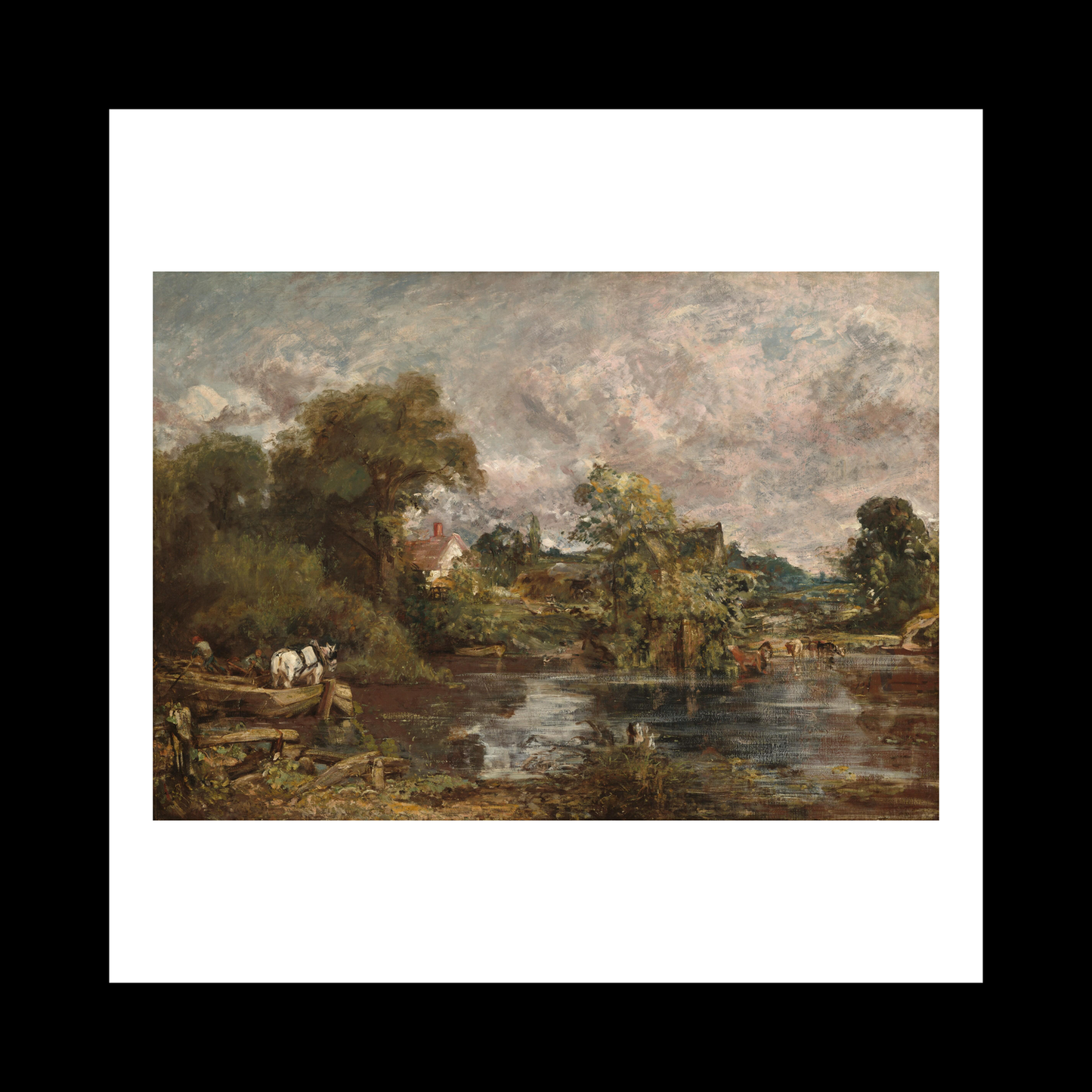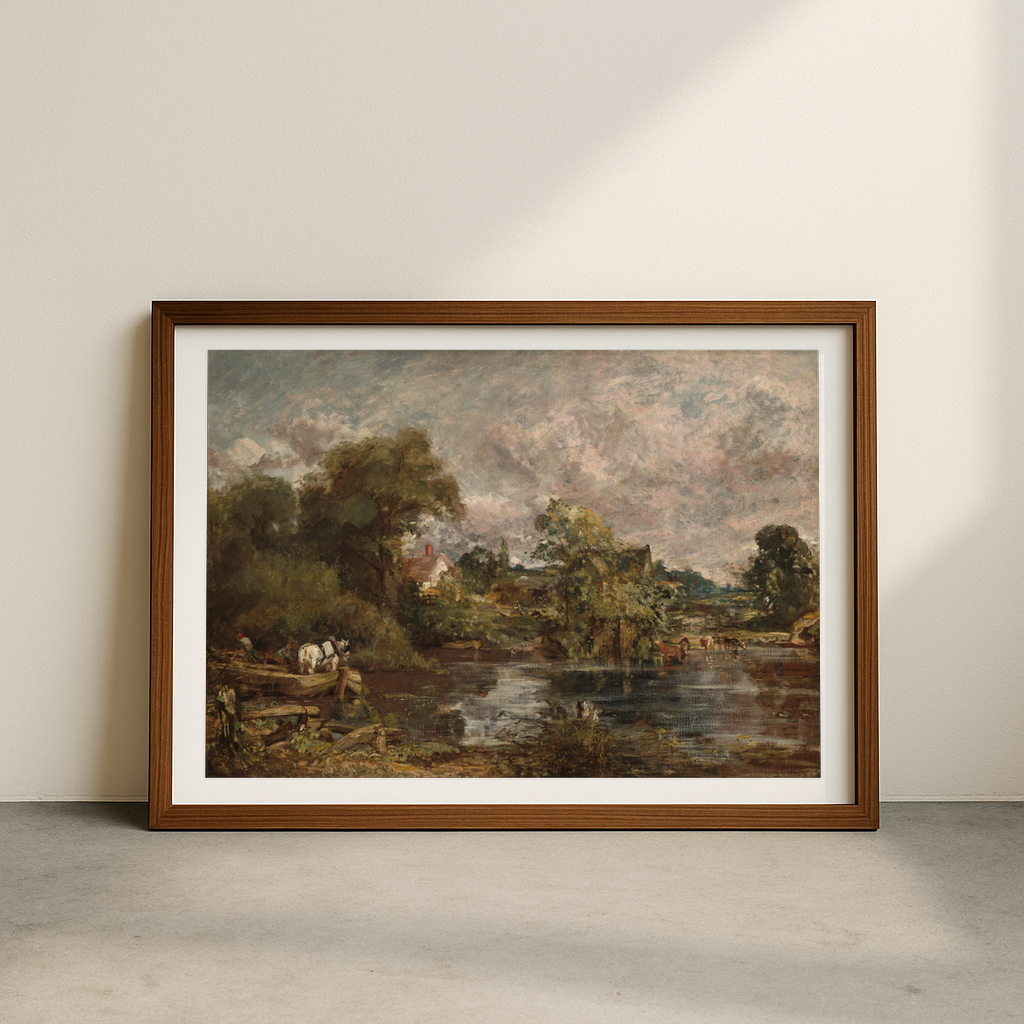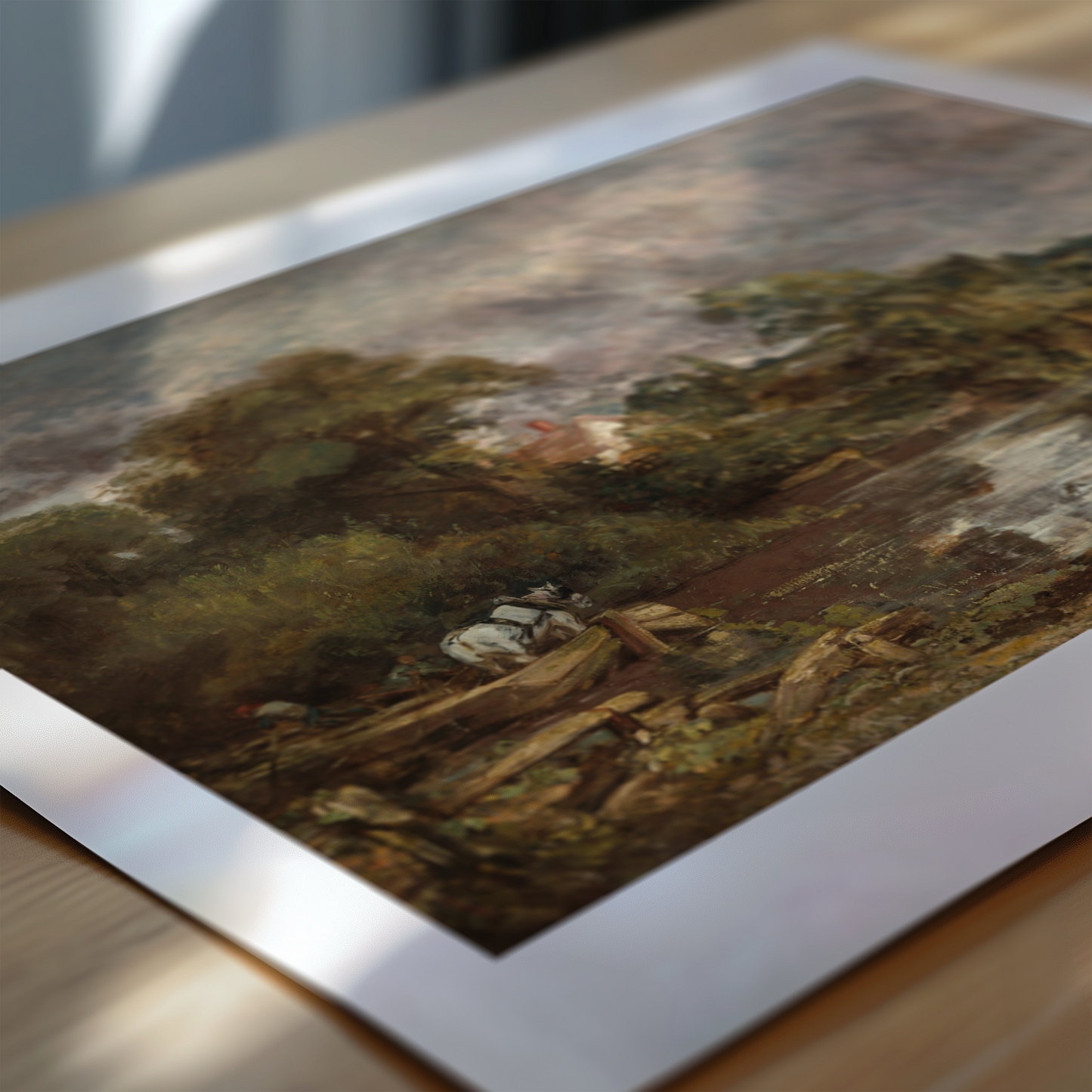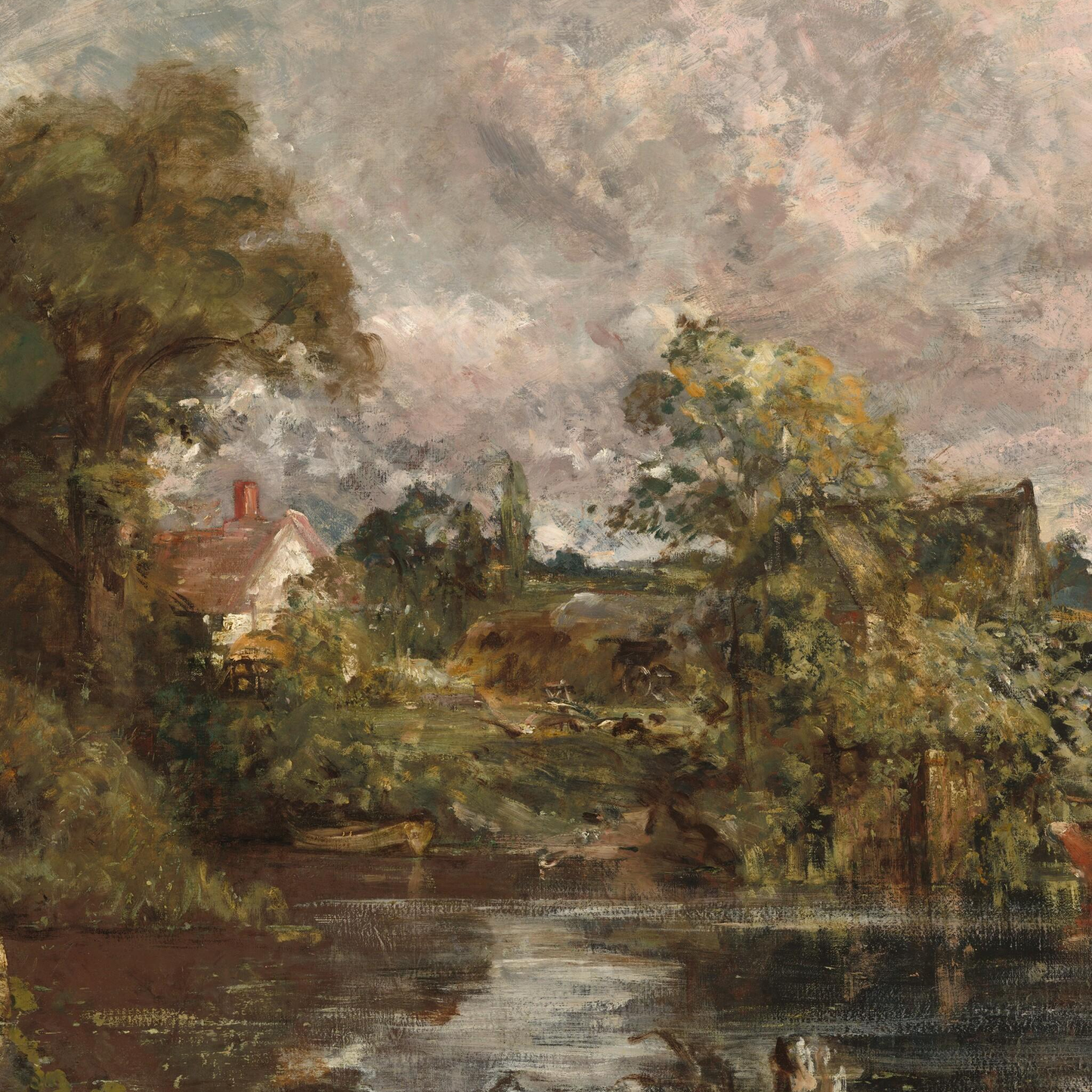1
/
of
6
White Horse (1818-1819) painting high
White Horse (1818-1819) painting high
Regular price
£12.45 GBP
Regular price
Sale price
£12.45 GBP
Taxes included.
Quantity
Couldn't load pickup availability
"The White Horse" (1818-1819) by John Constable stands as one of the finest examples of British Romantic landscape painting, showcasing the artist's remarkable ability to capture the essence of rural English life. The painting depicts a white horse drinking from the River Stour in Suffolk, set against a dramatic sky and lush countryside. Constable's meticulous attention to detail is evident in the way he renders the horse's gleaming coat, the reflective surface of the water, and the intricate play of light through the clouds.
What makes this work particularly fascinating is Constable's innovative technique of building up layers of paint to create texture and depth. He employed both broad brushstrokes for the sky and precise details for the vegetation, developing what would later become his signature style. The composition brilliantly balances the majestic white horse against the darker elements of the landscape, creating a focal point that draws the viewer's eye while maintaining harmony with its surroundings.
This painting holds special significance as it marks a pivotal moment in Constable's career when he began focusing on larger-scale works. Created during a period when he was establishing himself as a serious landscape painter, it reflects his deep connection to the Suffolk countryside where he grew up. The white horse itself was likely based on one owned by a local miller, adding a personal touch to this celebration of rural English life. Constable's dedication to painting directly from nature, rather than following academic conventions, was revolutionary for his time and influenced generations of landscape artists who followed.
The work also represents Constable's belief in the importance of capturing the changing effects of light and weather, evident in the carefully observed cloud formations and atmospheric conditions. His study of meteorology informed his approach to painting skies, which he considered "the chief organ of sentiment" in landscape painting. This scientific approach combined with artistic sensitivity created a uniquely powerful depiction of the English countryside.
View full details
What makes this work particularly fascinating is Constable's innovative technique of building up layers of paint to create texture and depth. He employed both broad brushstrokes for the sky and precise details for the vegetation, developing what would later become his signature style. The composition brilliantly balances the majestic white horse against the darker elements of the landscape, creating a focal point that draws the viewer's eye while maintaining harmony with its surroundings.
This painting holds special significance as it marks a pivotal moment in Constable's career when he began focusing on larger-scale works. Created during a period when he was establishing himself as a serious landscape painter, it reflects his deep connection to the Suffolk countryside where he grew up. The white horse itself was likely based on one owned by a local miller, adding a personal touch to this celebration of rural English life. Constable's dedication to painting directly from nature, rather than following academic conventions, was revolutionary for his time and influenced generations of landscape artists who followed.
The work also represents Constable's belief in the importance of capturing the changing effects of light and weather, evident in the carefully observed cloud formations and atmospheric conditions. His study of meteorology informed his approach to painting skies, which he considered "the chief organ of sentiment" in landscape painting. This scientific approach combined with artistic sensitivity created a uniquely powerful depiction of the English countryside.
